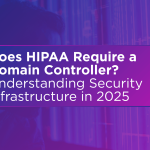
Part one of our series on Business Continuity for Healthcare
“It’s not the load that weighs you down, it’s the way you carry it.”
It’s a great quote – if you don’t think about it too long.
Aside from the fact that one can easily imagine a crushing load upon their shoulders – even those 1,000 pounds of feathers (yes, it’s still half a ton) – there is something to be said about the way loads are carried, and how burdens are shared.
That’s what engineers do, after all. If designed well, every bridge, building, and buttress will distribute loads, and the outcomes can be spectacular as well as useful. Humanly speaking, sharing the burden of another is also a wonder, helping to lift a downcast spirit.
So what about your servers? How good are they at “sharing the load?”
As we’ll see, when it comes to keeping your healthcare practice going, a strong load balancing solution can make all the difference.
A Successful App
Think of this common scenario: after a lengthy design and development process, you’re excited to see your new app finally becoming successful.
Unfortunately, a rise in the number of concurrent users hitting your exciting new app begins to burden your servers, leading to a degradation of performance and speed.
The last thing you want now is your clients complaining that your app is slow and laggy – just as things are starting to click, and your enterprise is taking off.
So what do you do?
The Load Balancer
Load balancers are an ideal solution for healthcare applications, especially those that require high data availability and system scalability.
Here’s how they work:
Load balancers are appliances (physical or virtual) that effectively monitor the requests across a number of servers in different datacenters.
Utilizing a series of algorithms to test for performance, your application’s health is continually monitored, and traffic is distributed away from the burdened server and re-routed to servers more capable of fulfilling the requests.
Servers are spun up and down as the demand grows and shrinks, in order to maintain an optimal balance of performance and cost.
And here’s the beauty of it: if one app server should go down, the web app continues to run on a healthy app server in the same or different data center. When there’s a spike in traffic, more app servers are spun up; as the load dies down again, the app servers are destroyed seamlessly.
In this manner, speed and capacity are optimized. Scalability, performance, and maximum uptime are also ensured.
SQL Load Balanced
Your SQL database will also be replicated across multiple data centers, ensuring speed and performance, and keeping your app snappy and responsive.
The replica ensures that even if a data center goes offline, your app will continue to work using the failover replica in a different data center. One failover replica can be configured per master SQL DB.
In addition, multiple read replicas can be configured as needed for offloading read transactions and enhancing performance. After a failover event occurs, the failover replica becomes the master and a new Cloud SQL instance is spun up to become a new replica.
Advanced Access Protection & Security
The load balancer uses HTTPS protocol to communicate with end-users and back-end systems so that data in motion is protected with encryption.
Some load balancers are incorporated into “Application Delivery Controllers,” which may include such things as IP Traffic Optimization, Web Application Firewalls, and anti-DDoS measures to thwart attackers. This device can effectively block attacks such as SYN floods, port exhaustion, & IP fragment floods.
HIPAA Vault’s security measures also call for sending public traffic through a Web Application Firewall (WAF) in order to inspect URLs and payloads. If the WAF detects anomalous traffic patterns, the culprit’s access is blocked. In this way, WAFs filter the traffic and mitigate attackers.
So let’s summarize the benefits of a fully managed, HIPAA compliant, load-balanced environment:
- Multiple servers across data centers help to distribute workloads and optimize performance continuity
- Business uptime and availability of health data are maintained, so you can continue to treat patients
- Backups of your data – including SQL databases – to a different data center for high redundancy and disaster recovery are ensured
- High scalability to adjust to changing system needs is also achieved, dynamically replicating and destroying servers as the demand fluctuates
- Critical Security Technologies, including encryption, Anti-DDoS, and WAF for advanced data protections, are applied
Want to learn more about the benefits of a compliant, load-balanced environment – along with 24/7 monitoring and dedicated, live support for your growing healthcare practice? Contact us at 760–290–3460 or www.hipaavault.com.
HIPAA Vault is a leading provider of HIPAA compliant cloud solutions – including hosting, protected Email, and secure WordPress – enabling healthcare providers, business organizations, and government agencies to secure their protected health information from data breaches, threats, and security vulnerabilities. Customers trust HIPAA Vault to mitigate risk, actively monitor and protect their infrastructure, and ensure that systems stay online at all times.





